ITA
Tor Marancia è una borgata costruita alla fine degli anni quaranta dall'Istituto Case Popolari su una porzione di territorio situata alla sinistra della Cristoforo Colombo nel comune di Roma.
A Shangai di solito non ci capiti, devi andarci di proposito, questo era già di suo un campanello di allarme in merito a le zone più "sbagliate" della capitale, ma da quando vari artisti di ogni parte del mondo hanno deciso di dipingere le pareti delle palazzine tutto è cambiato.
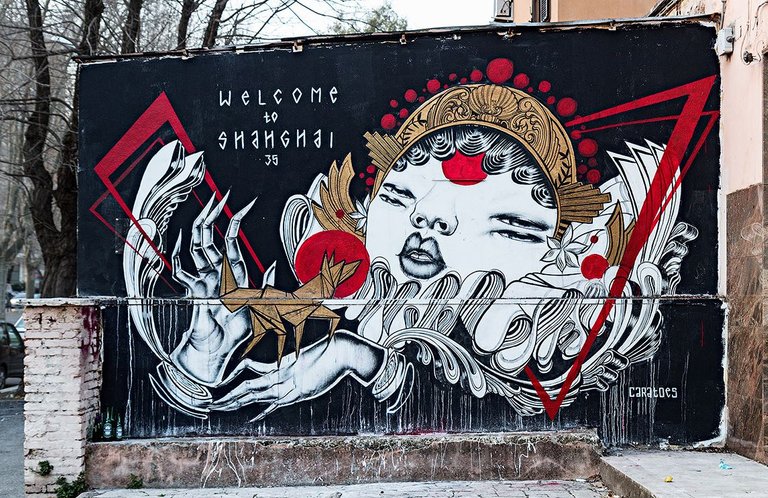
Quando arrivi ti trovi davanti una piccola porticina dalla quale entrare, un'apertura in mezzo ad un muro che conduce all'interno del comprensorio, una scritta sul muro li accanto recita "Welcome to Sgangai", un perfetto museo a cielo aperto che vive ogni giorno la vita di tantissime persone, sia condomini che turisti costantemente in visita ogni gjorno.
Il quartiere Tor Marancia venne costruito in pochi giorni nel 1933 per ospitare i romani che il regime fascita aveva sfrattato dalle proprie abitazioni dal centro della città e si guadagnò molto presto il soprannome Shanghai per due ragioni. La prima era perchè famiglie numerose vivevano ammassate in case di una stanza sola, senza pavimenti e con i servizi igienici in comune.
La seconda ragione era la frequenza degli allagamenti, dovuta al fatto che questa zona prima era tutta palude, quindi come la famosa città asiatica nota per le costanti alluvioni, questo quartiere venne subito etichettato in questo modo particolare e da allora tutti lo chiamarono in questo modo.
Il progetto che ha reso possibile tutto questo si chiama Big City Life, le facciate di undici palazzine del comprensorio di viale Tor Marancia 63 sono diventate delle tele giganti a disposizione di artisti provenienti da paesi di tutto il mondo. In pochissimo tempo i writers hanno disegnato murales alti circa 14 metri, uno più bello dell’altro e tutti diversi tra loro per temi, stili e colori.
Un'altra particolarità è stata il voler coinvolgere le persone all'interno di queste palazzine, sviluppando le opere d'arte con uno stretto legame con alcune delle persone nate e vissute da sempre in quel luogo.
Voglio raccontarvi le storie che si sono create con questo progetto, delle piccole favole da osservare pensando che proprio dentro quella finestra per esempio, c'era il soggetto dell'opera, che viveva normalmente la sua vita.
IL PESO DELLA STORIA - Franco Fasoli (Argentina) alias FAZ
Ritrae due lottatori, uno argentino e l'altro italiano, quest'ultimo ritratto con un ambivalente significato di soccorso e lotta, il senso ultimo ovviamente era una dimostrazione di legame tra i due paesi ma affascina la posa utilizzata.
VENI VIDI VINCI di Lek & Sowat (Francia)
Racconta la storia di Andrea Vinci, un giovane del comprensorio che da ragazzino per un tuffo ha perso la mobilità delle gambe. Andrea abita nella palazzina, al secondo piano senza ascensore. Grazie alla visibilità portata dal progetto, è stata avviata una raccolta di fondi dal basso per risolvere questo problema.
Il murale è anche un omaggio a Leonardo da Vinci e alla Roma antica, con la citazione di Cesare però rivisitata con un VINCI in omaggio al ragazzo al suo interno.
Spettacolo, Rinnovamento, Maturità - Andrew Pisacane alias GAIA (Nord America)
Il nome dell'opera è semplicemente il gusto di chi vive li, quando l'artista una volta finito il lavoro chiese agli abitanti cosa gli comunicasse tale disegno, loro risposero quelle tre parole.
Ciò che attira subito lo sguardo è l’arancione del mandarino-palloncino, ricordo di un viaggio di Gaia in Sud-Italia. Il frutto, per volontà popolare, è poi diventato un’arancia in riferimento al nome del quartiere. Mentre la testa di marmo simbolo del regime fascista che sfrattò il popolo dal centro di Roma per costruire Via della Conciliazione e Via dei Fori Imperiali e lo confinò in un ghetto malsano.
Hic sunt Adamantes - Diamond (Italia)
Il titolo fa il verso alla dicitura Hic sunt leones che si metteva sulle mappe per indicare i luoghi più pericolosi e selvaggi da esplorare. Qui invece ci sono i diamanti, intesi come le persone che abitano nel Lotto. Il drago, richiama la Cina e il soprannome del quartiere.
Con questo stile che ricorda moltissimo la Art Nuveau ritraendo una bella donna però addormentata, come la città stessa che non riesce a scuotersi dal proprio torpore.
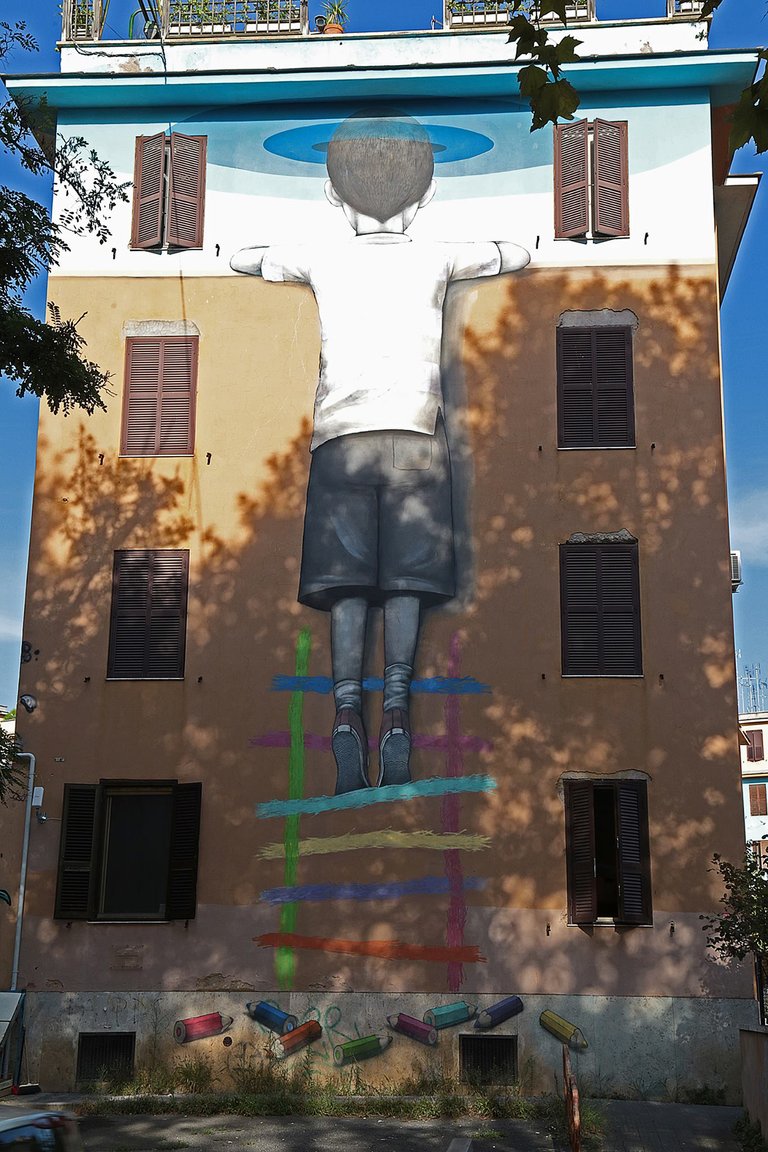
IL BAMBINO REDENTORE Julian Seth Malland (Francia)
Questo lavoro narra la storia di Luca, che risiedeva qui e che è morto a causa di un incidente durante un gioco. Una ferita ancora aperta per tutti che l’artista ritrae in un’immagine di grande speranza. Perché il cielo è blu oltre quel cemento quindi tutti dovremmo costruirci una scala di colori per guardare oltre i muri.
PIRAMIDE - Best Ever (Inghilterra)
Questo duo francese ha voluto esprimere tramite il gesto dell'abbraccio la creazione delle piramidi, non è chiaro il senso legato al luogo, ma si vocifera che il volto ritratto sia una ragazza cresciuta al secondo piano di quella palazzina.
Humanity Constellation o Elisabetta - Philippe Baudeloque (Francia)
Questa è la mano della signora Elisabetta, simbolo dell’umanità, con all’interno una galassia di costellazioni che allude all’universo abitato dagli uomini.
Il nome Elisabetta è un omaggio ad Elisabetta Pedriacci, proprietaria della mano raffigurata ed inquilina residente al secondo piano di quel palazzo.
Talking like a waterfall - SatOne (Venezuela)
La storia dietro questo disegno è molto buffa, l'artista venezuelano intento ad osservare la nuda parete in attesa di ispirazione, si è accorto di due inquiline della palazzina osservata che, intente in un animata discussione si facevano notare con toni di voce molto alti, Tedesco in realtà di origine, non ha capito granché della discussione, ma è rimasto colpito dalle sonorità e dal gesticolare e li ha rappresentati poeticamente in una coloratissima Cascata di parole.
IL VENTO - Moneyless (Italia)
Una valanga di stecchini lanciati su un tavolo, un disegno che sembra quasi in movimento ed infatti il titolo questo esprime, la scelta di questo è dovuta ad uno dei residenti al quale venne chiesto cosa gli comunicasse questo disegno.
L'ASSOLO - Danilo Bucchi (Italia)
Tra gli abitanti del quartiere ci sono due scuole di pensiero, chi la chiama la streghetta, chi la bambolina. Bucchi , pittore romano del contemporaneo che a Tor Marancia ha realizzato il suo primo muro, la chiama assolo. Personalmente, vedendo quelle scarpe rosse ho pensato al simbolo della lotta contro il femminicidio e la violenza contro le donne e mi ha fatto tenerezza.
A Carlo Alberto, 93 Toni - Alberonero (Italia)
Il suo murale si presenta come una vivace cascata di grandi quadrati variopinti, che conferiscono alla composizione un forte dinamismo.
La prima parte del titolo è legata ad una vicenda personale dell’artista, mentre i “93 toni” sintetizzano l’assoluta centralità del colore nelle sue creazioni.
IO SARO' - Guido Van Helten (Australia)
Il ritratto che Van Helten ha riprodotto sulla facciata di Tor Marancia, con una particolare tecnica che prevede il raffreddamento e il riscaldamento delle bombolette spray, è quello di una ragazza che venne spostata, all’inizio degli anni trenta nella Shanghai che poi sarebbe diventata la Tor Marancia di oggi.
Il murale è la trasposizione di una fotografia d’archivio reale, donando in questo modo all'opera un'appartenenza unica che personalmente mi colpisce molto.
Nostra Signora di Shanghai - Mr.Klevra (Italia)
E' un’icona protettrice, ispirata a quelle bizantine, e rende memoria alle origini del quartiere. Don Mauro, il parroco di Tor Marancia, ha benedetto la Nostra Signora di Shanghai: il quartiere ha quindi addirittura due madonne protettrici a vegliare su di esso.
Still Life - Reka (Australia)
Lo “still life” di Reka è un omaggio colorato a tutti i caffè, pranzi e cene offerti agli artisti dai residenti dei palazzoni durante la realizzazione del progetto, la gentilezza mostrata è stata una fortissima energia alla quale hanno attinto tutte le persone coinvolte, c'è stata una solidarietà pazzesca dentro queste mura, quest'opera è definita dai residenti il Picasso di Tor Marancia.
IL PONENTINO - Pantonio (Portogallo)
Vento e mare assieme in questo murale: il titolo infatti è un riferimento al vento più noto fra quelli che soffiano su Roma e che ha fatto ondeggiare per giorni il braccio metallico che teneva l’artista sospeso a 14 metri di altezza durante la realizzazione del disegno. Un vortice di pesci che porta la natura dentro una grande zona metropolitana.
Alme Sol Invictus - Domenico Romeo (Italia)
L'artista riprende il culto pagano del dio Sole, diffuso nella Roma antica. Il Sole, rosso e stilizzato, è sia un auspicio per la rinascita della borgata sia un invito ad avere coraggio e speranza nel rinnovamento.
Costretto a lavorare su una superficie problematica a causa della presenza di rami e arbusti, l’autore fa di questo iniziale ostacolo un elemento di forza e di stimolo, integrando la vegetazione all’interno dell’opera.
Fino alla fine dell'Ottocento questa era una vasta area spoglia di quasi tutto con una tenuta agricola, qualche casale di campagna, le catacombe dei primi cristiani, alcune torri di avvistamento di epoca medievale, cave di tufo e diversi fontanili. Solo nel 1930 furono costruite le casette su via delle Sette Chiese e qualche anno più tardi, nel 1933, la Borgata Tormarancio nella famigerata "buca di Shangai" (buca essendo davvero dentro una sorta di gigantesco fosso paludoso). Un esempio significativo di esclusione degli strati popolari più poveri della Capitale operata dal regime fascista, dove trovarono posto i diseredati delle baracche abusive e gli sfrattati. Solo nei primi anni Cinquanta, dopo una stagione di lotte per la casa e il lavoro, la baraccopoli venne completamente demolita. Al suo posto nacque questo quartiere, con le sue mille storie raccontate dagli anziani al tempo bambini.
Quando vi capiterà di passare per Roma, se volete osservare con i vostri occhi qualcosa di "personale", realizzato per dare nuove luce a qualcosa per molti dimenticato, vi consiglio di passarci. Ormai tantissima gente ogni giorno frequenta il quartiere, con gruppi al seguito di guide che raccontano la storia dietro ogni lavoro.
| Fotocamera | LUMIX GH5 | 12-60 Leica |
|---|
ENG
Tor Marancia is a village built in the late forties by the Istituto Case Popolari on a portion of the territory located to the left of the Cristoforo Colombo in the municipality of Rome.
Usually you don't get it in Shanghai, you have to go there on purpose, this was already an alarm bell about the most "wrong" areas of the capital, but since various artists from all over the world have decided to paint the walls of the buildings everything has changed.

When you arrive you find yourself in front of a small door from which to enter, an opening in the middle of a wall that leads inside the district, a writing on the wall next to them reads "Welcome to Sgangai", a perfect open-air museum that lives every day the life of many people, both condominiums and tourists constantly visiting every day.
The Tor Marancia district was built in a few days in 1933 to house the Romans that the fascit regime had evicted from their homes from the city center and soon earned the nickname Shanghai for two reasons. The first was because large families lived in one-room houses with no floors and shared toilets.
The second reason was the frequency of flooding, due to the fact that this area used to be all swamp, so like the famous Asian city known for constant floods, this district was immediately labeled in this particular way and since then everyone has called it this way .
The project that made all this possible is called Big City Life, the facades of eleven buildings in the district of Viale Tor Marancia 63 have become giant canvases available to artists from all over the world. In a very short time, the writers have drawn murals about 14 meters high, one more beautiful than the other and all different from each other in themes, styles and colors.
Another peculiarity was the desire to involve people within these buildings, developing the works of art with a close link with some of the people who have always been born and lived in that place.
I want to tell you the stories that have been created with this project, small fairy tales to be observed thinking that right inside that window for example, there was the subject of the work, who normally lived his life.
THE WEIGHT OF HISTORY - Franco Fasoli (Argentina) alias FAZ
It portrays two wrestlers, one Argentine and the other Italian, the latter portrayed with an ambivalent meaning of rescue and fight, the ultimate meaning was obviously a demonstration of the bond between the two countries but the pose used fascinates.
VENI VIDI VINCI di Lek & Sowat (France)
It tells the story of Andrea Vinci, a young man from the area who lost the mobility of his legs as a kid for a dip. Andrea lives in the building, on the second floor without a lift. Thanks to the visibility brought by the project, a bottom-up fundraiser was started to solve this problem.
The mural is also a tribute to Leonardo da Vinci and ancient Rome, with the quote from Caesar, however, revisited with a VINCI in homage to the boy inside.
Entertainment, Renewal, Maturity - Andrew Pisacane alias GAIA (Nord America)
The name of the work is simply the taste of those who live there, when the artist once finished the work asked the inhabitants what this drawing communicated to him, they answered those three words.
What immediately catches the eye is the orange of the mandarin-balloon, a reminder of a trip by Gaia to Southern Italy. The fruit, by popular will, then became an orange in reference to the name of the neighborhood. While the marble head symbol of the fascist regime that evicted the people from the center of Rome to build Via della Conciliazione and Via dei Fori Imperiali and confined them to an unhealthy ghetto.
Hic sunt Adamantes - Diamond (Italia)
The title mimics the words Hic sunt leones that were put on maps to indicate the most dangerous and wild places to explore. Here, on the other hand, there are diamonds, understood as the people who live in the Lotto. The dragon recalls China and the neighborhood's nickname.
With this style that is very reminiscent of the Art Nuveau portraying a beautiful woman but asleep, like the city itself that cannot shake itself from its torpor.

THE REDEEMER CHILD Julian Seth Malland (France)
This work tells the story of Luca, who resided here and who died in an accident during a game. A wound still open for everyone that the artist portrays in an image of great hope. Because the sky is blue beyond that concrete so we should all build a scale of colors to look beyond the walls.
PYRAMID - Best Ever (England)
This French duo wanted to express the creation of the pyramids through the gesture of the embrace, the meaning linked to the place is not clear, but it is rumored that the portrait face is a girl who grew up on the second floor of that building.
Humanity Constellation o Elisabetta - Philippe Baudeloque (France)
This is the hand of Mrs. Elizabeth, a symbol of humanity, with a galaxy of constellations inside that alludes to the universe inhabited by men.
The name Elisabetta is a tribute to Elisabetta Pedriacci, owner of the depicted hand and tenant residing on the second floor of that building.
Talking like a waterfall - SatOne (Venezuela)
The story behind this drawing is very funny, the Venezuelan artist intent on observing the bare wall waiting for inspiration, he noticed two tenants of the building observed who, intent in an animated discussion, made themselves noticed with very high tones of voice, Actually German by origin, he did not understand much of the discussion, but was struck by the sounds and gestures and poetically represented them in a colorful cascade of words.
THE WIND - Moneyless (Italia)
An avalanche of toothpicks thrown on a table, a drawing that seems almost in motion and in fact the title expresses this, the choice of this is due to one of the residents who was asked what this drawing communicated to him.
THE SOLO - Danilo Bucchi (Italia)
Among the inhabitants of the neighborhood there are two schools of thought, who calls her the witch, who the doll. Bucchi, a Roman contemporary painter who made his first wall in Tor Marancia, calls it solo. Personally, seeing those red shoes I thought of the symbol of the fight against femicide and violence against women and it made me tenderness.
To Carlo Alberto, 93 Tones - Alberonero (Italia)
His mural looks like a lively cascade of large multicolored squares, which give the composition a strong dynamism.
The first part of the title is linked to a personal story of the artist, while the "93 tones" summarize the absolute centrality of color in his creations.
I WILL BE - Guido Van Helten (Australia)
The portrait that Van Helten reproduced on the facade of Tor Marancia, with a particular technique that involves cooling and heating the spray cans, is that of a girl who was moved, at the beginning of the thirties to Shanghai, which would later become the Tor Marancia today.
The mural is the transposition of a real archive photograph, thus giving the work a unique belonging that personally strikes me a lot.
Our Lady of Shanghai - Mr. Klevra (Italia)
It is a protective icon, inspired by the Byzantine ones, and remembers the origins of the neighborhood. Don Mauro, the parish priest of Tor Marancia, blessed Our Lady of Shanghai: the district therefore even has two patron madonnas to watch over it.
Still Life - Reka (Australia)
The "still life" of Reka is a colorful tribute to all the coffees, lunches and dinners offered to the artists by the residents of the high-rise buildings during the realization of the project, the kindness shown was a very strong energy from which all the people involved drew. 'it was a crazy solidarity within these walls, this work is defined by the residents as the Picasso of Tor Marancia.
THE PONENTINO - Pantonio (Portugal)
Wind and sea together in this mural: the title is in fact a reference to the best known wind among those that blow over Rome and which made the metal arm that held the artist suspended 14 meters high during the making of the drawing sway for days . A vortex of fish that brings nature into a large metropolitan area.
Alme Sol Invictus - Domenico Romeo (Italia)
The artist takes up the pagan cult of the sun god, widespread in ancient Rome. The sun, red and stylized, is both an auspice for the rebirth of the village and an invitation to have courage and hope in renewal.
Forced to work on a problematic surface due to the presence of branches and shrubs, the author makes this initial obstacle an element of strength and stimulus, integrating the vegetation within the work.
Until the end of the nineteenth century this was a vast area bare of almost everything with an agricultural estate, some country houses, the catacombs of the early Christians, some medieval watchtowers, tuff quarries and several fountains. Only in 1930 were the houses built on via delle Sette Chiese and a few years later, in 1933, the Borgata Tormarancio in the infamous "Shanghai hole" (hole being really inside a sort of gigantic marshy ditch).
A significant example of the exclusion of the poorest popular strata of the capital operated by the fascist regime, where the dispossessed of the abusive shacks and the evicted found their place. Only in the early 1950s, after a season of struggles for housing and work, was the slum completely demolished. In its place this district was born, with its thousand stories told by the elderly at the time children.
When you happen to pass through Rome, if you want to observe something "personal" with your own eyes, created to give new light to something that is forgotten for many, I suggest you go there. Now many people frequent the neighborhood every day, with groups following guides who tell the story behind each job.
| Camera | LUMIX GH5 | 12-60 Leica |
|---|
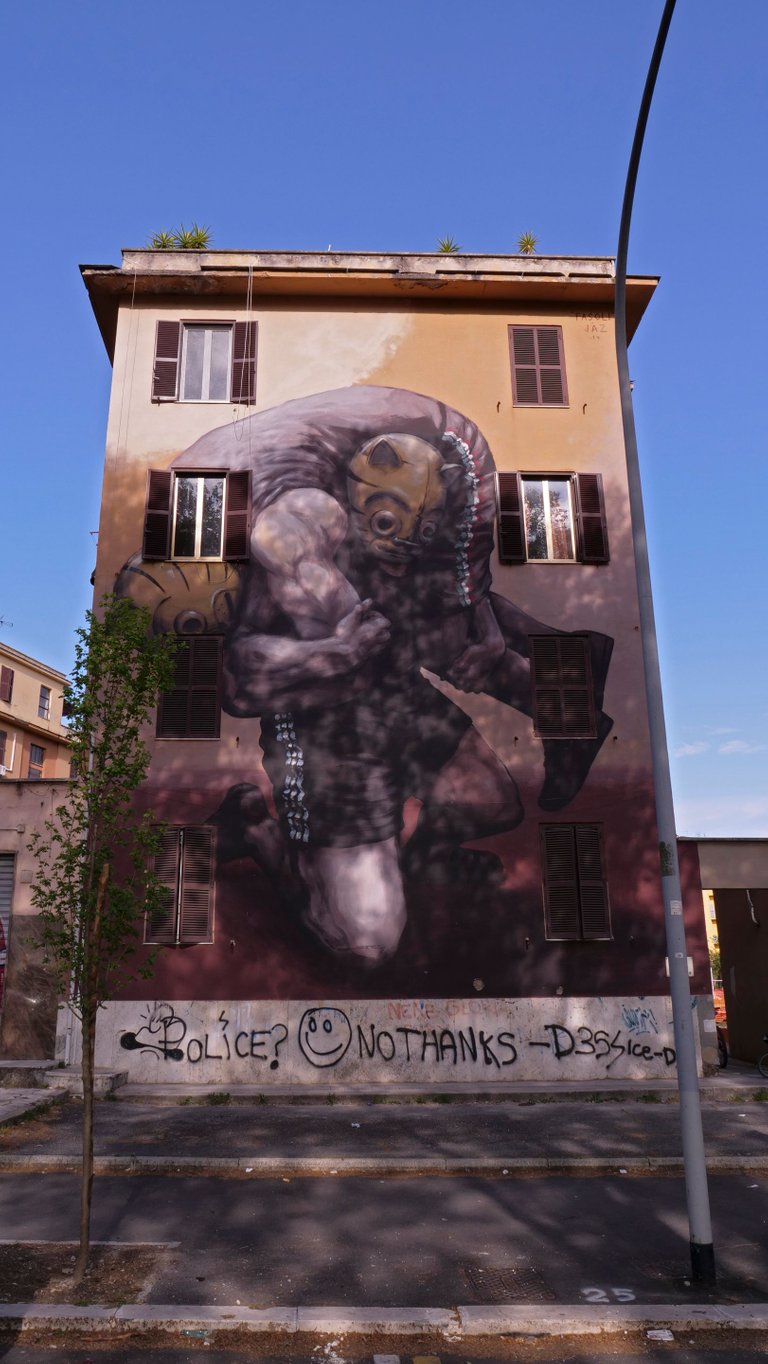
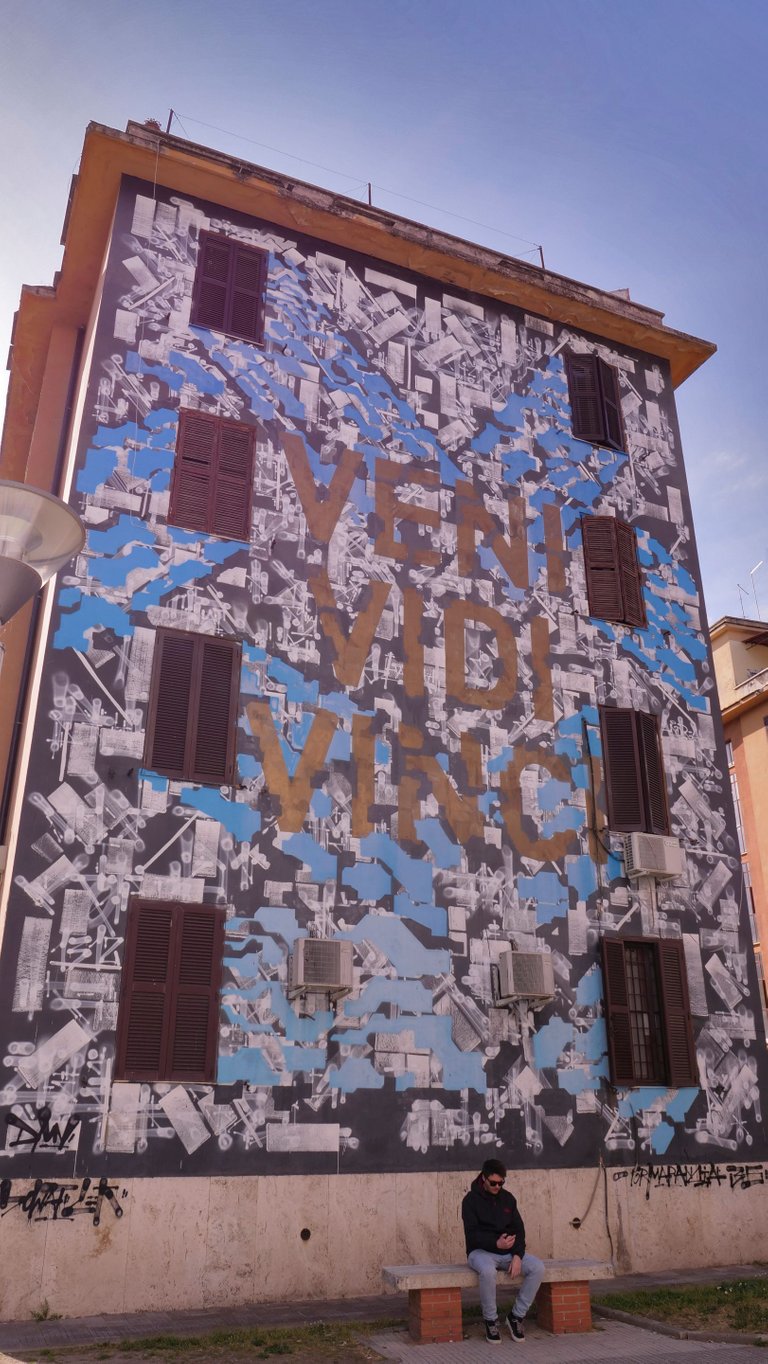
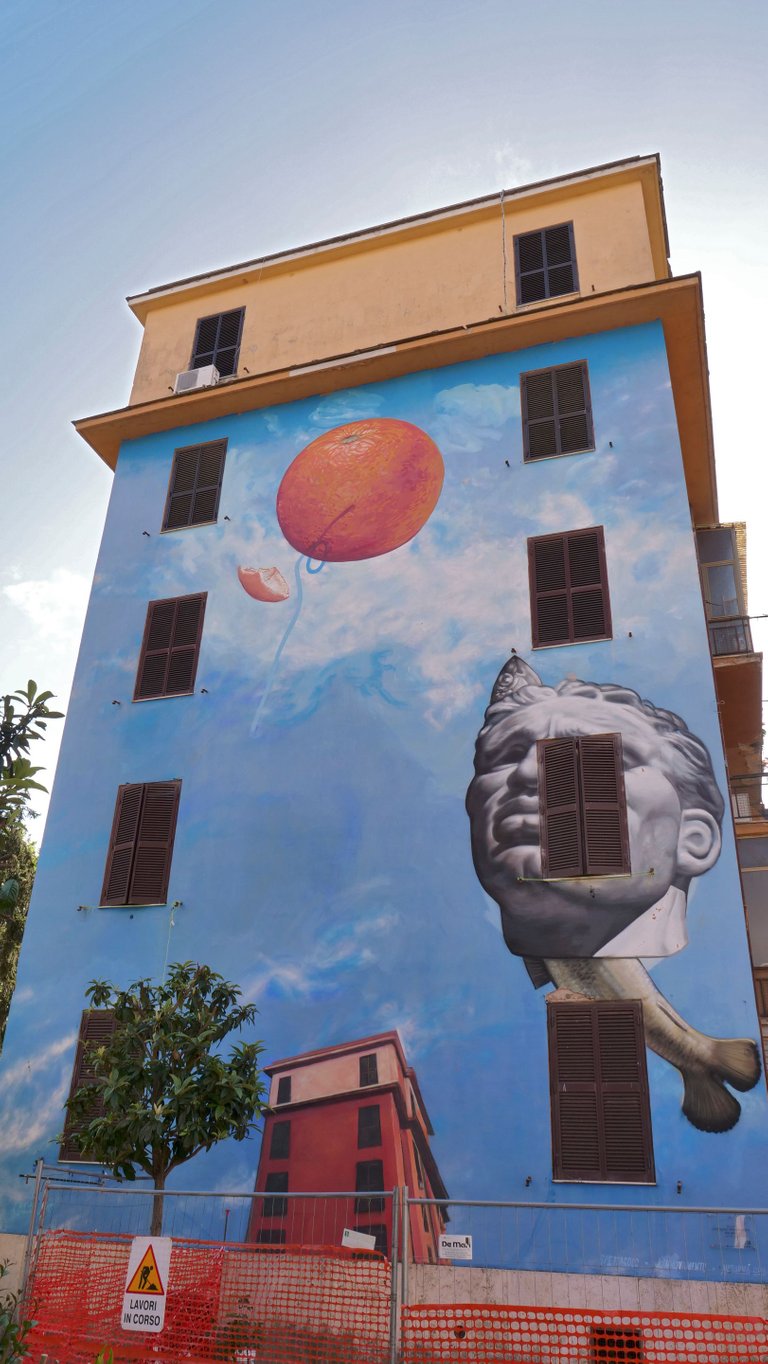
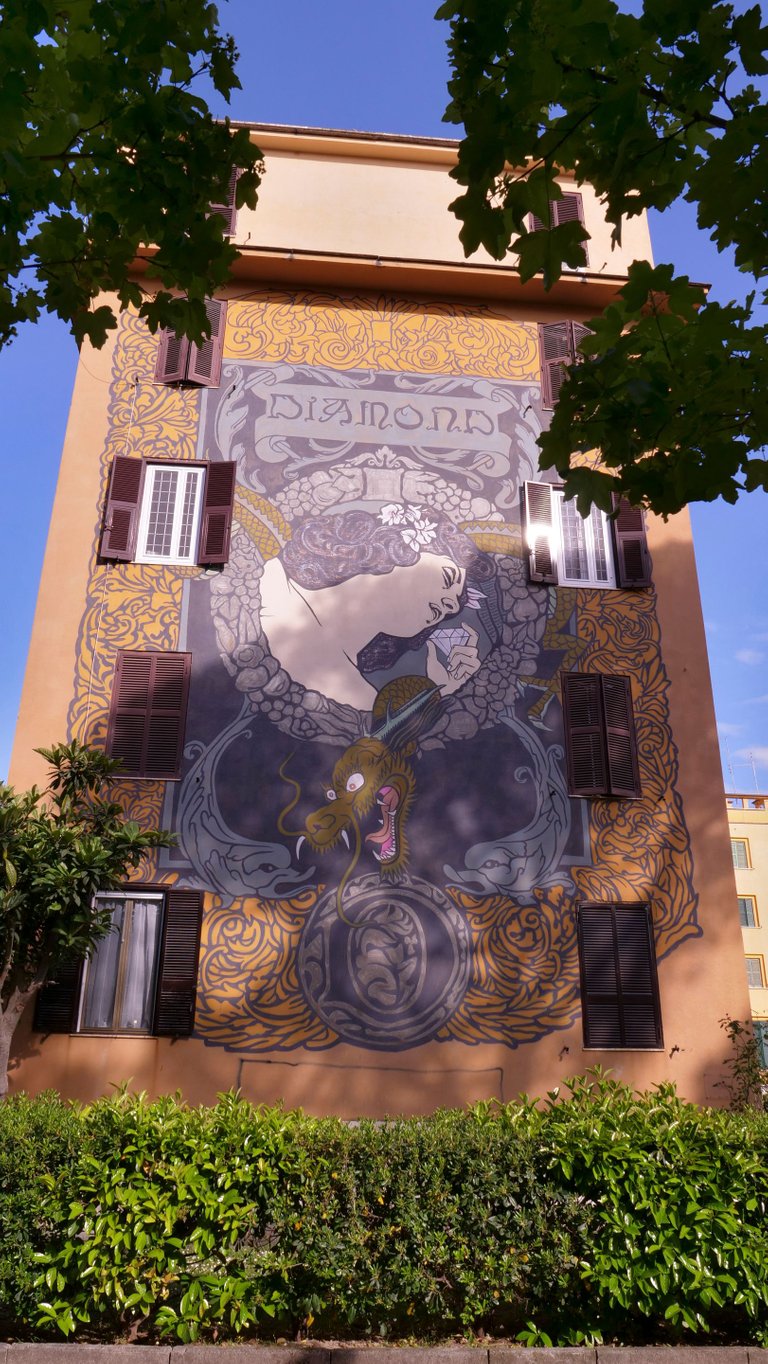

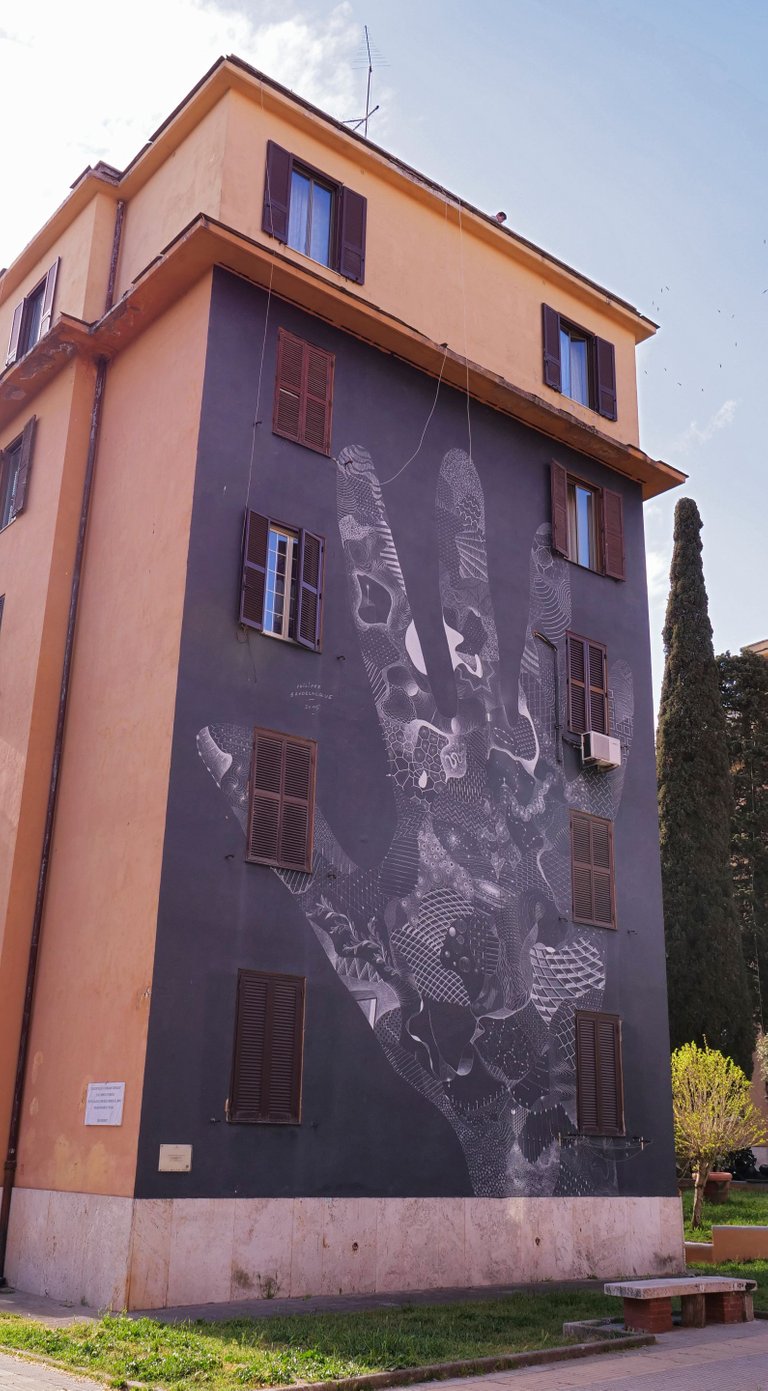
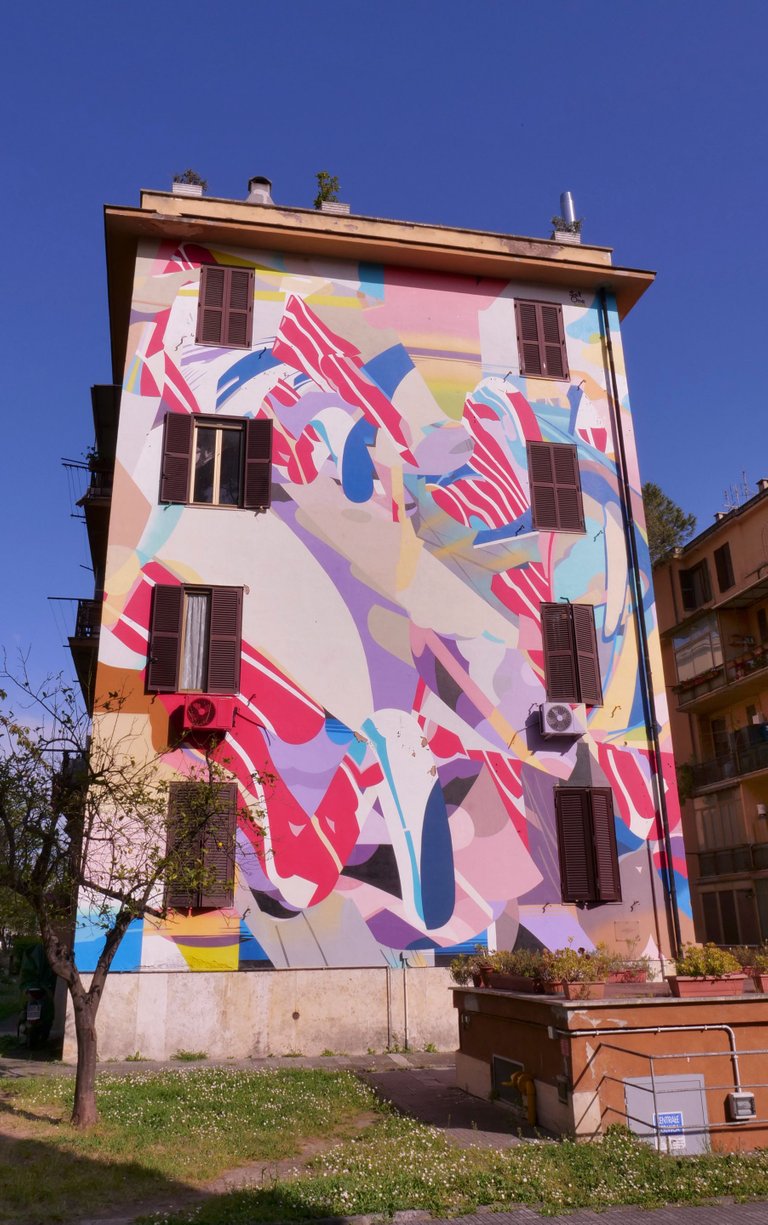
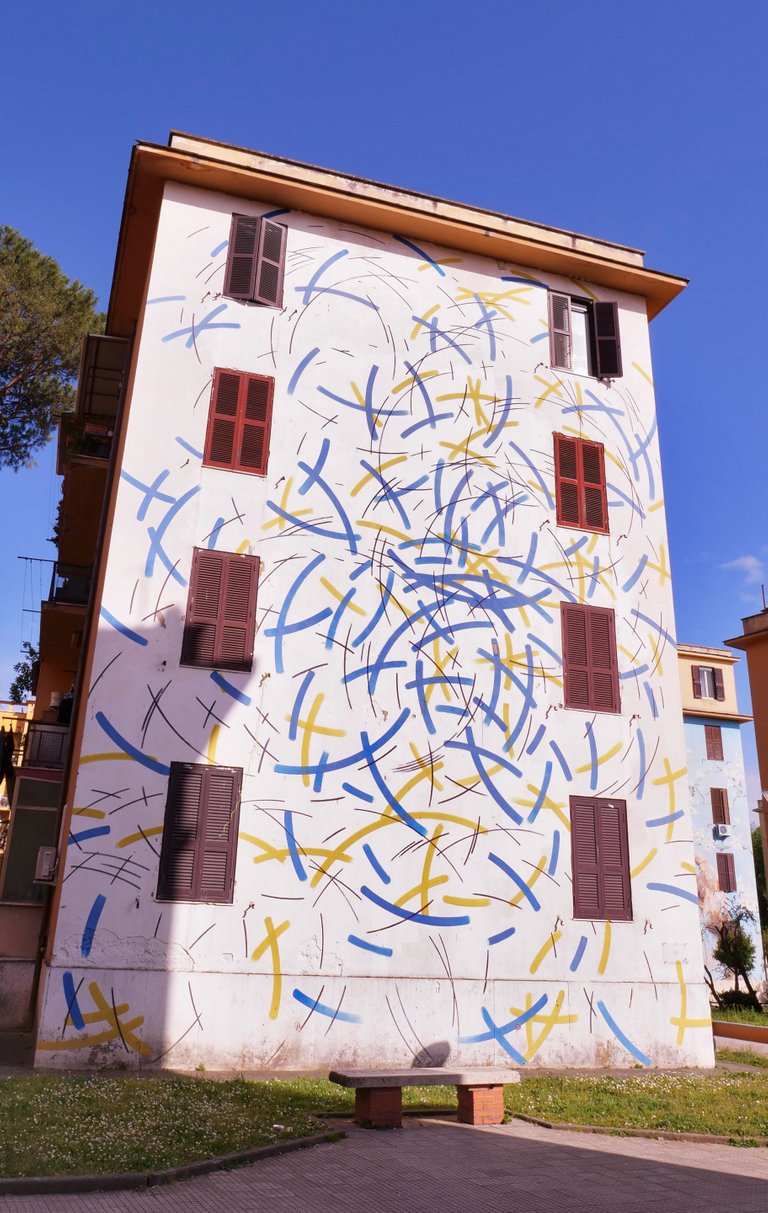
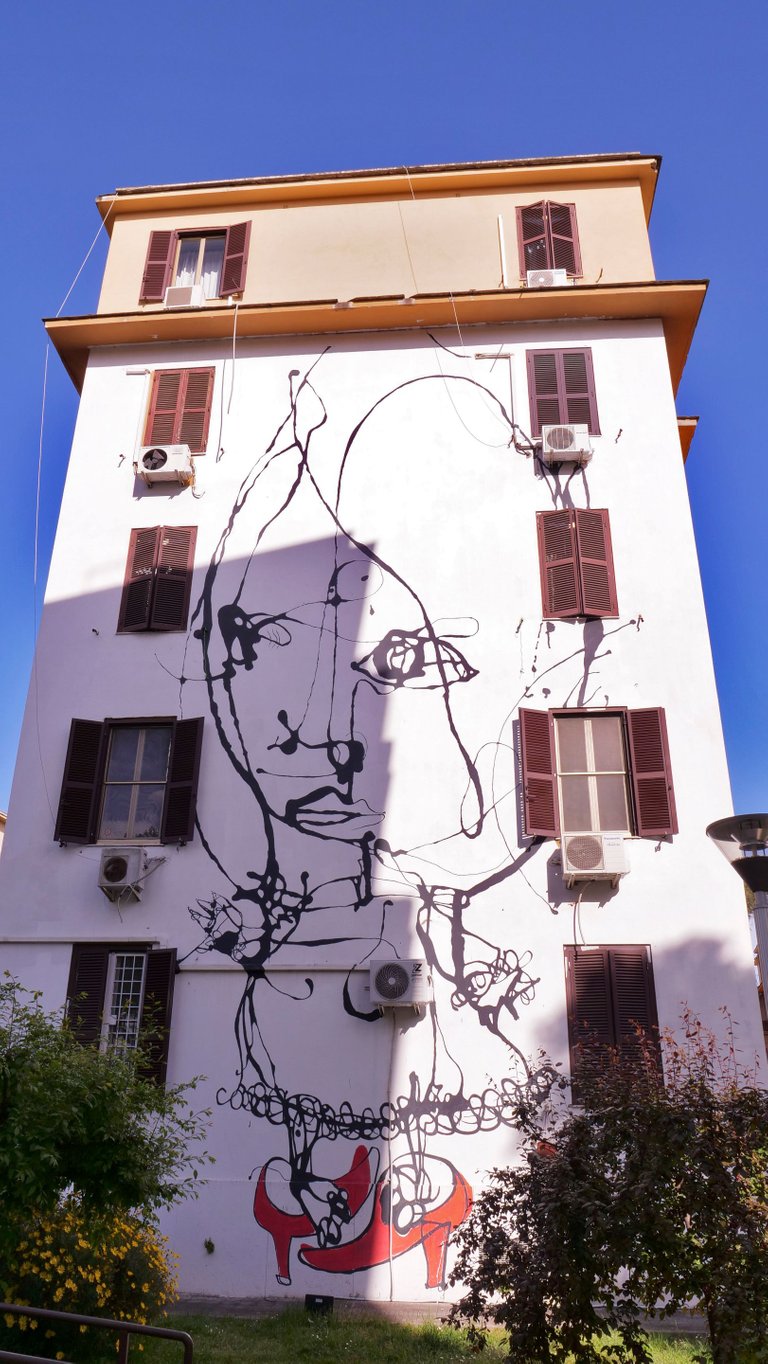
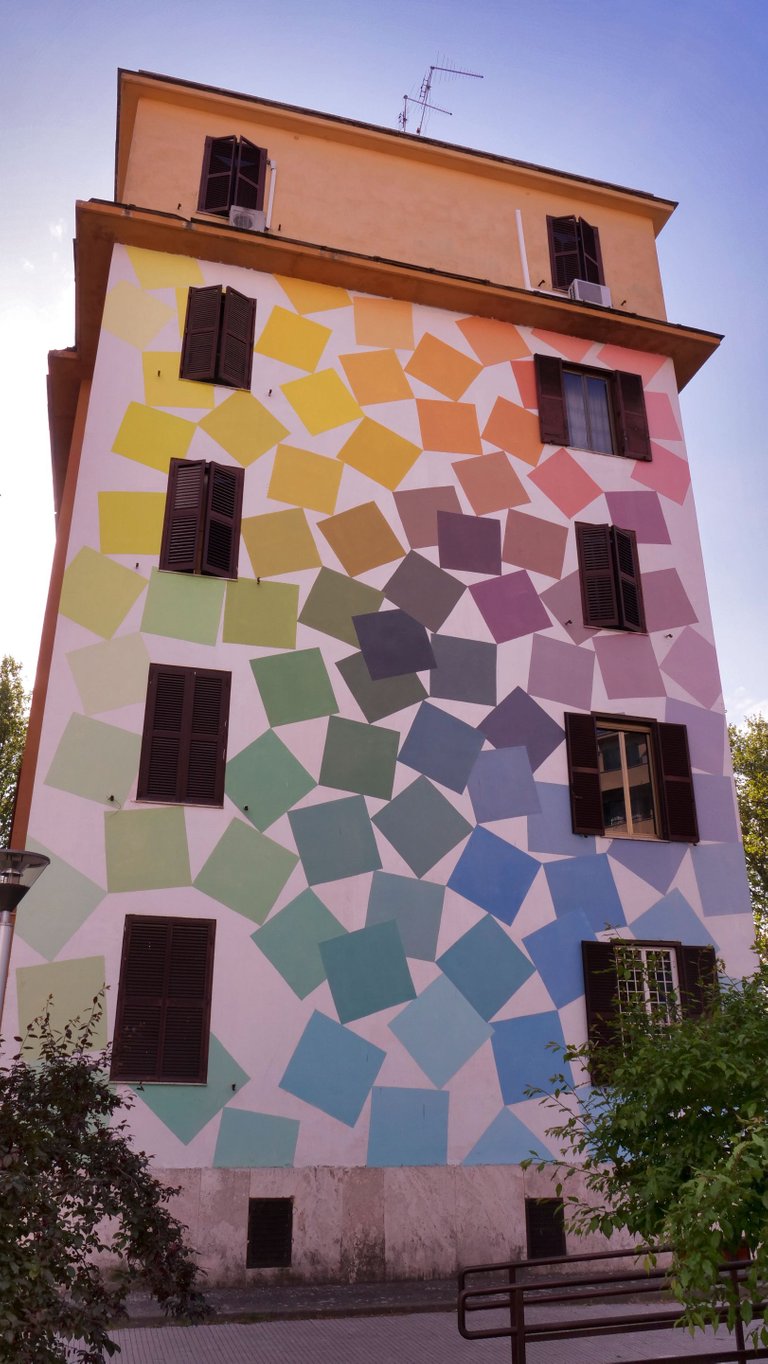
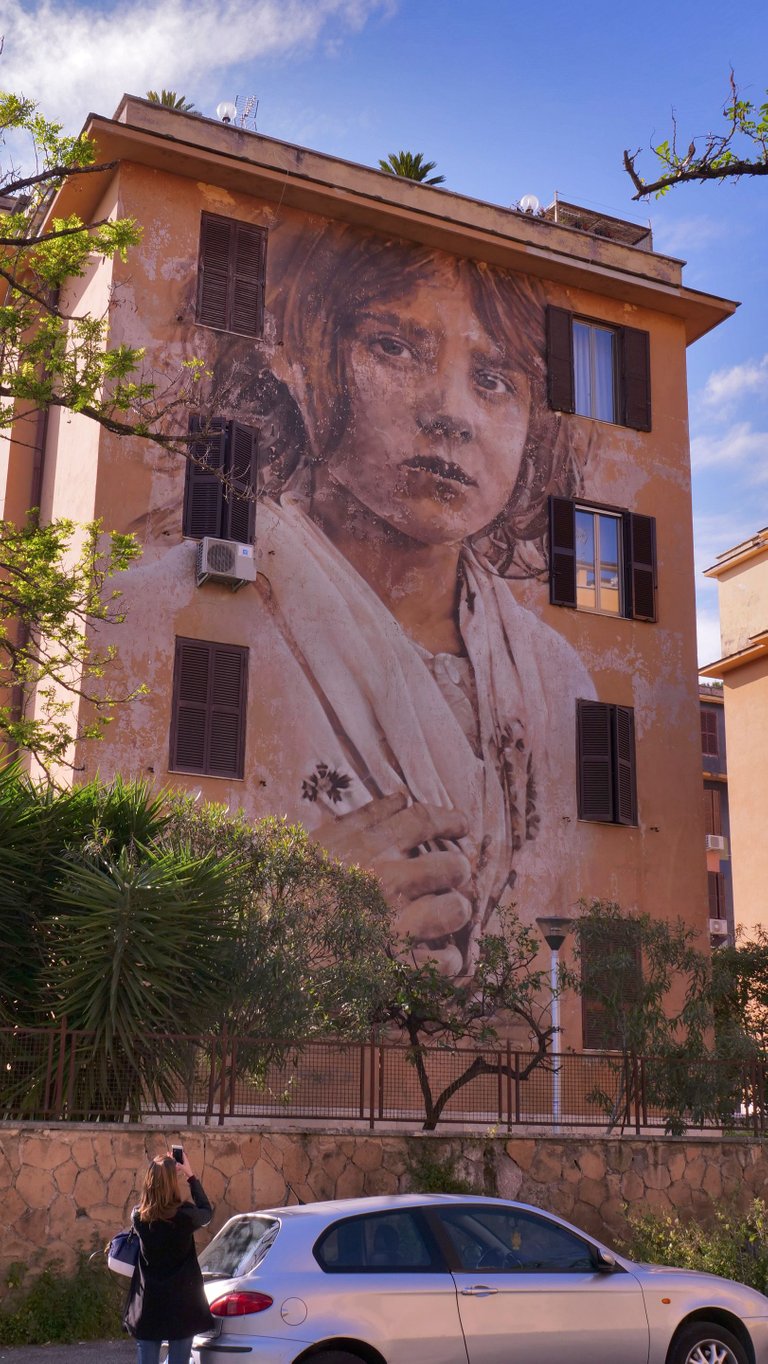
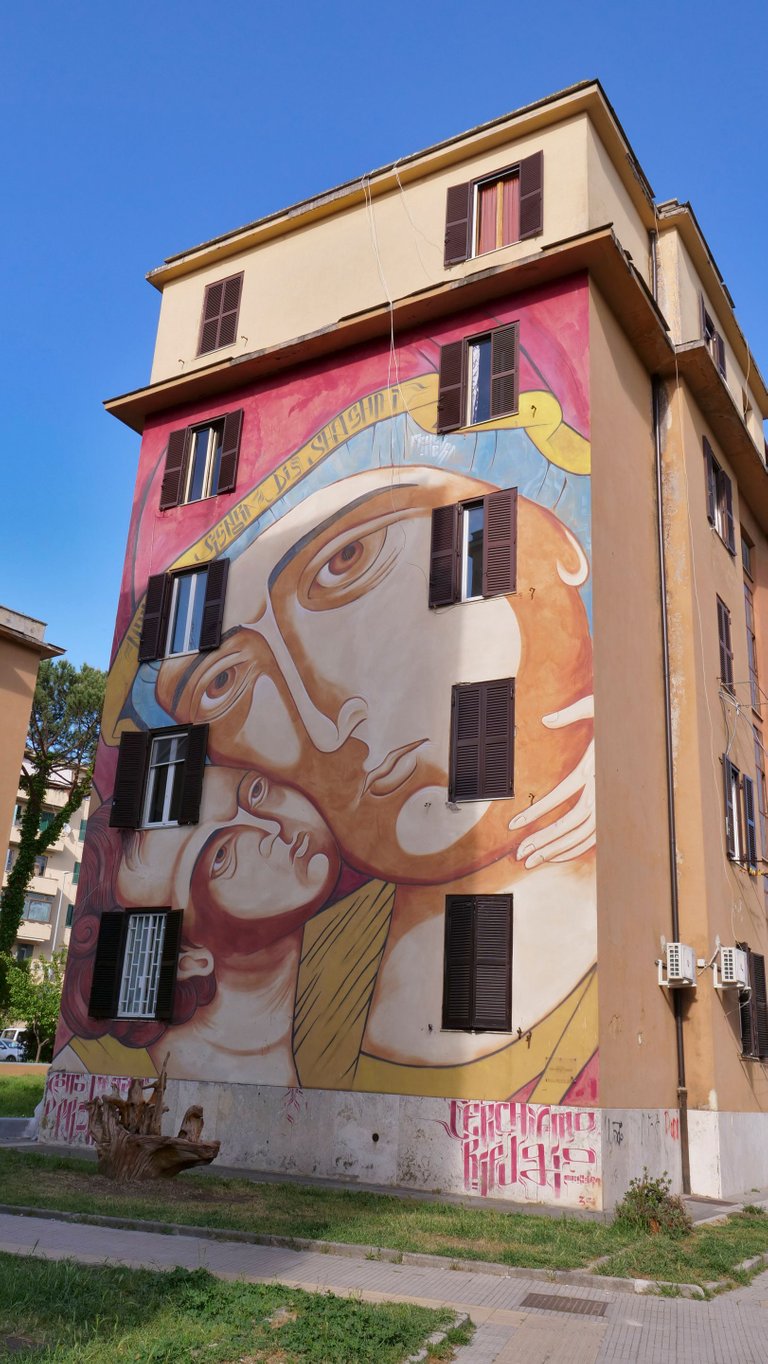
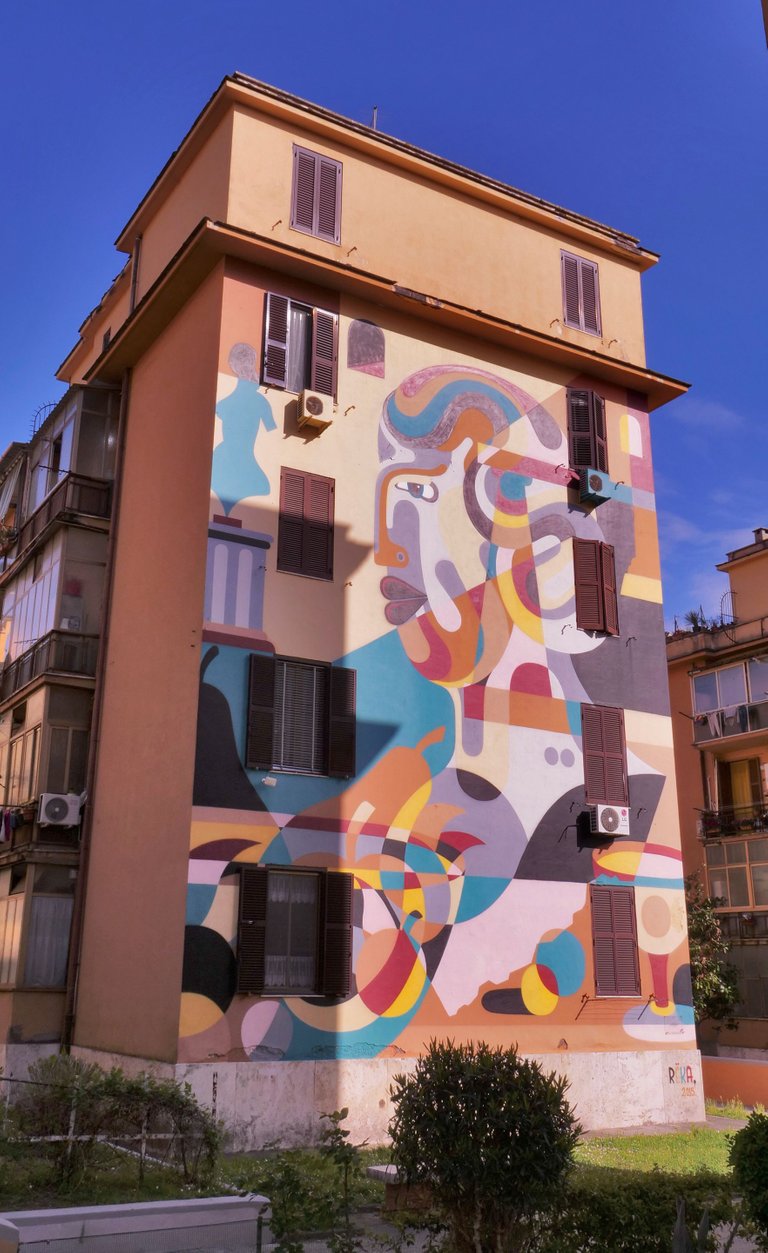
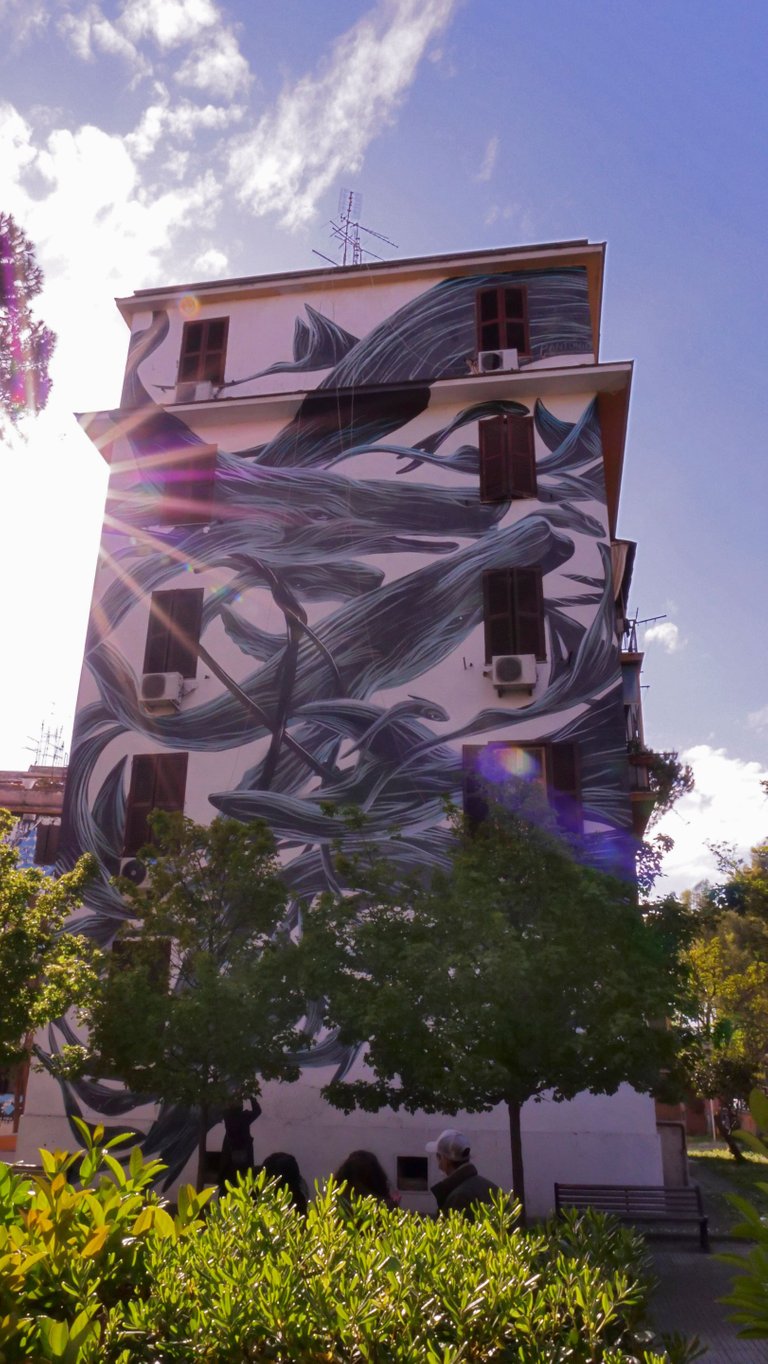
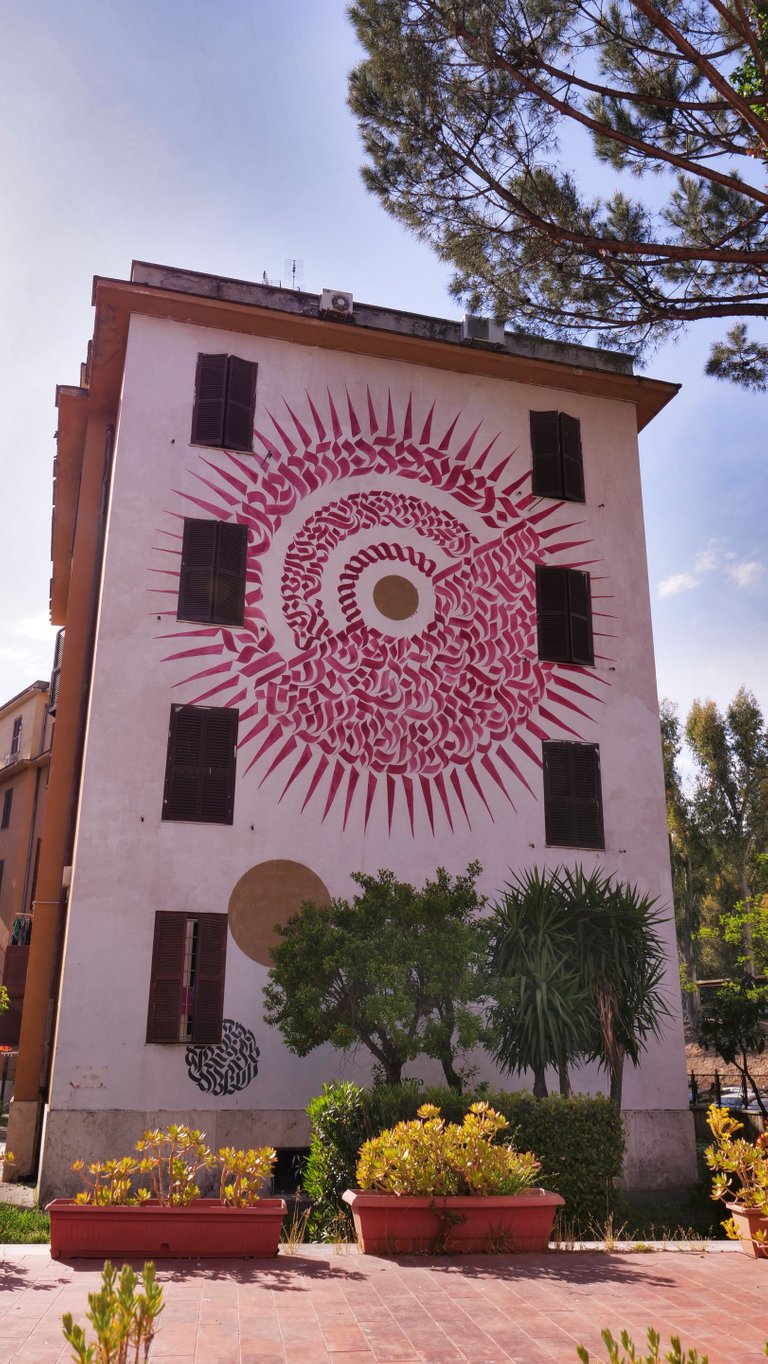
This post was shared and voted inside the discord by the curators team of discovery-it
Join our community! hive-193212
Discovery-it is also a Witness, vote for us here
Delegate to us for passive income. Check our 80% fee-back Program
Veramente un bel lavoro
!discovery 35
Grazie mi fa piacere 😊
Gran bel post!